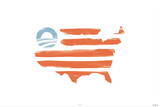washingtontimes.com
Last summer, a Pew survey showed partisan polarization is the worst since 1987, when the issue was first examined. Rank-and-file Democrats are increasingly liberal, and Republicans are more conservative. Niche news sites and social media allow both sides to consume information that confirms and reinforces their biases. As a result, the country is more and more divided into two distinct groups with separate facts, separate histories and separate cultures. What they have in common is an abiding distrust and distaste for the other side.
The divide goes beyond politics. Sophisticated microdata analyses reveal clear divisions in taste regarding what television shows both sides watch, what beers they drink and what cars they buy. (For Democrats, the Honda Civic Hybrid is No. 1; for Republicans, it's the Ford Mustang convertible).
The divided people have elected a divided Congress. According to a study by Keith T. Poole of the University of California, moderates in both parties who bridged the gap have “virtually disappeared” in the last decade. Ideologically driven, party-line ballots now account for over 90 percent of roll-call votes. The degree of polarization in Congress now is greater than it was in the late 19th century in the wake of the Civil War when Union and Confederate veterans sparred in Congress with the same doggedness they had on the battlefield.
Mr. Obama promised to heal this breach but made it worse. Backed by a supermajority in Congress his first two years, he rammed through a hard-left agenda, labeling anybody who opposed him as extremists, racists or fools. After losing his pliant majority in the 2010 midterm elections, he sought ways to circumvent the will of the people rather than compromise with Republican leaders. This only widened the breach. A spring 2012 report by Gallup showed the gap between Mr. Obama’s approval ratings by party set records for three years straight. In 2011, there was a 68 percent gulf between his high approval from Democrats and low approval from Republicans. In the latest weekly data, the gap has grown to an astonishing 81 percent. Even the liberal Washington Post ran a headline calling Mr. Obama, “The most polarizing president. Ever.”
Mr. Obama has been testing his unity theme in stump speeches for at least five months. Yet over that time, his takeaway message has changed. He used to follow up with, “We're not Democrats or Republicans first; we're Americans first. That’s what I believe.” He now says, “I believe in you. I still believe in your capacity to help me bring about change. And I’m asking you to keep believing in me.” He no longer asks citizens to rally to the national ideal, but to unite behind him alone. His campaign replaced the Stars and Stripes with a faded flag sporting his personal logo. He no longer believes in America first, but only in Obama, ever and always.
James S. Robbins is senior editorial writer for foreign affairs at The Washington Times and author of the forthcoming, “Native Americans: Patriotism, Exceptionalism, and the New American Identity” (Encounter, 2013).

No comments:
Post a Comment
Note: Only a member of this blog may post a comment.